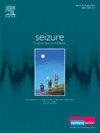Modulation of neuroinflammation as a therapeutic strategy for the control of epilepsy
IF 2.8
3区 医学
Q2 CLINICAL NEUROLOGY
引用次数: 0
Abstract
Neuroinflammation plays a pivotal role in the onset and progression of epilepsy. In this review, we critically examine: (1) the dual roles of astrocytes and microglia in maintaining a chronic inflammation and its contribution to epileptogenesis and seizures; (2) the crosstalk between the histamine released by mast cells and the brain histaminergic neurotransmission, an underexplored mechanism for seizures; (3) the potential of inflammatory mediators as biomarkers for predicting prognosis and risk stratification; (4) the shared inflammatory pathways linking epilepsy and Alzheimer’s disease, with special attention to reactive astrocyte and ferroptosis markers in identifying individuals at risk; (5) emerging therapeutic strategies, including conventional anti-inflammatory drugs and traditional medicine, for seizure control through modulation of neuroinflammation. With these carefully chosen topics, we introduce new molecular findings reinforcing the crucial role of neuroinflammation in epilepsy and as a marker for epileptogenesis, a topic of special interest for the acquired epilepsies such as hippocampal sclerosis. Moreover, we explored other mechanisms that received far less attention, especially those linking epilepsy with Alzheimer’s disease, and the potential role of mast cells in seizures.
调节神经炎症作为控制癫痫的治疗策略
神经炎症在癫痫的发生和发展中起着关键作用。在这篇综述中,我们严格检查:(1)星形胶质细胞和小胶质细胞在维持慢性炎症及其对癫痫发生和癫痫发作的贡献中的双重作用;(2)肥大细胞释放的组胺与脑组织胺能神经传递之间的串扰,这是癫痫发作的一个尚未被探索的机制;(3)炎症介质作为生物标志物预测预后和风险分层的潜力;(4)癫痫和阿尔茨海默病之间的共同炎症通路,特别关注反应性星形胶质细胞和铁下垂标志物,以识别高危个体;(5)新兴的治疗策略,包括常规抗炎药物和传统药物,通过调节神经炎症来控制癫痫发作。通过这些精心挑选的主题,我们介绍了新的分子发现,加强了神经炎症在癫痫中的关键作用,并作为癫痫发生的标志,这是对后天性癫痫(如海马硬化)特别感兴趣的主题。此外,我们还探索了其他受到较少关注的机制,特别是那些将癫痫与阿尔茨海默病联系起来的机制,以及肥大细胞在癫痫发作中的潜在作用。
本文章由计算机程序翻译,如有差异,请以英文原文为准。
求助全文
约1分钟内获得全文
求助全文
来源期刊

Seizure-European Journal of Epilepsy
医学-临床神经学
CiteScore
5.60
自引率
6.70%
发文量
231
审稿时长
34 days
期刊介绍:
Seizure - European Journal of Epilepsy is an international journal owned by Epilepsy Action (the largest member led epilepsy organisation in the UK). It provides a forum for papers on all topics related to epilepsy and seizure disorders.
 求助内容:
求助内容: 应助结果提醒方式:
应助结果提醒方式:


